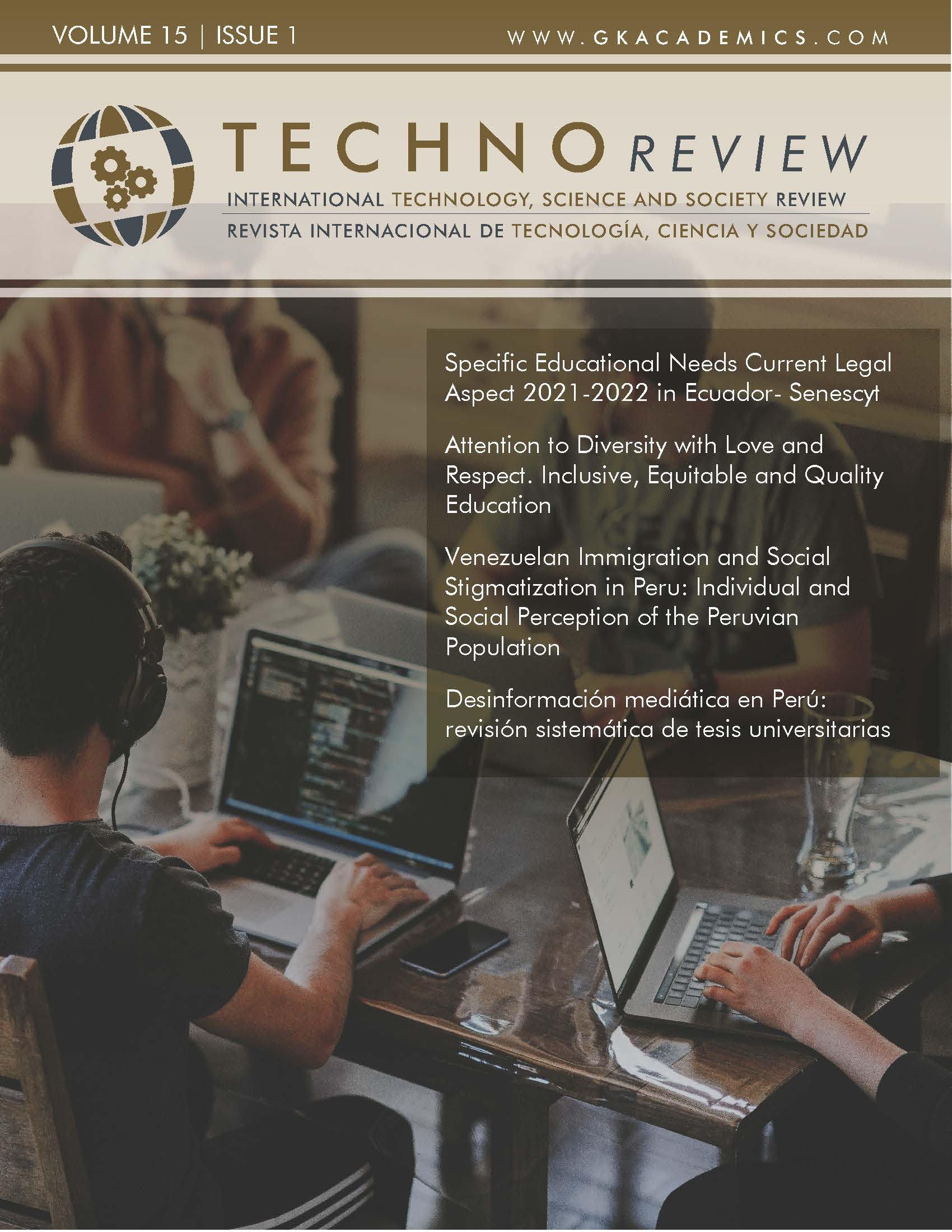Implementation strategies of a crm system from an endomarketing perspective to foster positive organizational behavior
DOI:
https://doi.org/10.37467/revtechno.v15.5097Palavras-chave:
Organization, Customer Relationship, Management, Commitment, Positive Organizational, EndomarketingResumo
A company with a strategic vision oriented towards business relationships seeks to adopt tools that help it achieve this goal. One of these tools could be Customer Relationship Management (CRM), which places the employee at the center of the organization, thus improving employee satisfaction and engagement. This, in turn, leads to optimized profitability and increased productivity in any type of business. Despite the existence of previous research on this topic, it is still necessary to deepen the analysis of the implications of the implementation of CRM tools.
Referências
Albrecht, K. (1992). Internal Customer Service. Editorial Granica.
Allen, N. J., & Meyer, J. P. (1990). The Measurement and Antecedents of Affective, Continuance, and Normative Commitment to the Organization. Journal of Occupational Psychology, 63(1), 1-18.
Araque-Jaimes, D. L., Sánchez-Estepa, J. M., & Uribe-R, A. F. (2017). Connection between internal marketing and organizational commitment in Colombian Technological Development Centers. Estudios Gerenciales, 33(142), 95-101. doi:10.1016/j.estger.2016.12.005.
Araque-Jaimes, D. L., Sánchez-Estepa, J. M., & Uribe-R, A. F. (2017). The Influence of Internal Marketing on Employee Engagement: A Research from the Marketing Relational Approach. Journal of Human Resources Management and Labor Studies, 5(1), 1-23.
Arosa Carrera, J. (2020). Marketing relacional: estrategias para fidelizar clientes. Editorial UOC.
Arosa-Carrera, C.R. (2020). Innovation in the paradigm of relationship marketing. Estudios Gerenciales, 36(154), 114-121. Retrieved from (http://www.scielo.org.co/pdf/eg/v36n154/0123-5923-eg-36-154-114.pdf)
Bruin-Reynolds, D., Howcroft, B., & Andon, P. (2015). Marketing in the Public Sector: Is There Value in Using Marketing for Service Identification and Delivery? Public Management Review, 17(8), 1111-1131.
Campbell, A. (2003). Creating Customer Knowledge Competence: Managing Customer Relationship Management Programs Strategically. Industrial Marketing Management, 32(5), 375-383.
Chen, I. J., & Popovich, K. (2003). Understanding Customer Relationship Management (CRM): People, Process and Technology. Business Process Management Journal, 9(5), 672-688.
Committee, D. T., & al. (2015). Marketing Plans: How to Prepare Them, How to Use Them. Wiley.
Csikszentmihalyi, M. (1982). Flow: The Psychology of Optimal Experience. Harper & Row.
Fluegge, R. (2008). The Joy of Work: Jobs, Hobbies, and Flow Activities. In: Proceedings of the 2008 International Conference on Digital Arts. ACM.
Grönroos, C. (1994). From Marketing Mix to Relationship Marketing: Towards a Paradigm Shift in Marketing. Management Decision, 32(2), 4-20.
Habul, A., Hoxha, A., & Aranitasi, E. (2017). Impact of Customer Relationship Management on Employee's Well-being and Organizational Performance: Evidence from the Albanian Telecommunication Sector. Journal of Economics and Sustainable Development, 8(3), 77-85.
Habul, S., & Dinovic, M. (2017). Customer Relationship Management and Its Impact on Employee Productivity. In European Conference on Management, Leadership & Governance (p. 238). Academic Conferences International Limited.
Kim, W. G., & Frazier, G. L. (1997). An empirical investigation of the relationship between quality, satisfaction, and linkages between providers and customers. In Advances in Services Marketing and Management: Research and Practice (Vol. 6, pp. 309-334). Emerald Group Publishing Limited.
Kumar, V., Jones, E., Venkatesan, R., & Leone, R. P. (2011). Is Market Orientation a Source of Sustainable Competitive Advantage or Simply the Cost of Competing? Journal of Marketing, 75(1), 16-30.
Luthans, F. (2002). The Need for and Meaning of Positive Organizational Behavior. Journal of Organizational Behavior, 23(6), 695-706.
Luthans, F., Luthans, K. W., & Luthans, B. C. (2003). Positive psychological capital: Beyond human and social capital. Business Horizons, 47(1), 45-50.
Malthouse, E. C., Haenlein, M., Skiera, B., Wege, E., & Zhang, M. (2013). Managing Customer Relationships in the Social Media Era: Introducing the Social CRM House. Journal of Interactive Marketing, 27(4), 270-280.
Martín, A. M., Sánchez, M. J. R., Rodríguez, M. S., & Jiménez, E. J. (2009). Customer relationship management and innovation capability: an empirical research. Business Research Quarterly, 12(2), 259-270.
Martín, H., Camarero, C., & Camarero, C. (2009). Internal Marketing and Internal Customer Behavior: An Empirical Analysis in the Retail Distribution Firm. Universia Business Review, (23), 48-67.
Maynez, A. (2016). Culture and affective commitment: do they influence internal knowledge transfer? Contaduría y Administración, 61(4), 666-681. Retrieved from (https://dialnet.unirioja.es/servlet/articulo?codigo=6027021)
Maynez, I. (2016). The Influence of Organizational Culture and Affective Commitment on Internal Knowledge Transfer. Journal of Knowledge Management, 20(3), 536-552.
Morgan, R. M., & Hunt, S. D. (1994). The Commitment-Trust Theory of Relationship Marketing. Journal of Marketing, 58(3), 20-38.
Nilan, M. (2000). Techno-Pleasures: New Media and the Reclamation of Desire. Society for Research into Higher Education & Open University Press.
Paz Vilchez, J. E., Huamán Moreto, S. A., & Tarrillo Paredes, J. (2020). Endomarketing, organizational commitment and job satisfaction in collaborators of an educational association. Apuntes Universitarios, 10(4), 108-125. https://doi.org/10.17162/au.v10i4.495.
Peteraf, M. (1993). The Cornerstones of Competitive Advantage: A Resource-Based View. Strategic Management Journal, 14(3), 179-191.
Piriyakul, R. (2023). One to one marketing management via customer complaint. Srinakharinwirot University. Retrieved from (https://www.researchgate.net/publication/369514566_One_to_one_marketing_management_via_customer_complaint)
Downloads
Publicado
Como Citar
Edição
Seção
Licença
Os autores/as que publicam nesta revista concordam com os seguintes termos:
- Os autores/as terão os direitos morais do trabalho e cederão para a revista os direitos comerciais.
- Um ano após a sua publicação, a versão do editor estará em acesso aberto no site da editora, mas a revista manterá o copyright da obra.
- No caso dos autores desejarem asignar uma licença aberta Creative Commons (CC), poderão a solicitar escrevendo a publishing@eagora.org







